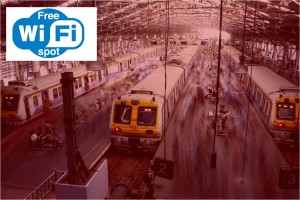Wi-Fi hotspots at more than 4000 semi-urban and rural stations
RailTel and the Department of Telecommunications (DoT) are planning to deploy Wi-Fi hotspots at about 4,000 semi-urban and rural railway stations across the country. The proposed initiative, which is expected to entail an investment of Rs 4 billion, will give boost to the government’s Digital India programme and a deeper penetration into rural India which haven’t been covered by telecom infrastructure. RailTel is seeking DoT’s approval to fund this program through a USO (Universal Service Obligation) fund. The corpus was created in 2003 to support projects for communications and technology access to people in rural and remote areas at affordable prices. The initiative can help bring connectivity to the rural areas as hotspots can serve an area of 8-10 kilometers. . Infrastructure at wayside railway stations can be utilized and it can host functions of a common service center (CSC).
Indian Railways’ telecom infrastructure provider covers 70% of the India’s population through optic fibre cable (OFC) network, connecting country’s major semi-urban and rural regions. Introduction of WiFi connectivity in rural areas will open avenues for other services such as banking, education, healthcare and employment. Government support is vital for this initiative and consideration should be given to operating expenditure subsidy.
It is expected that Wi-Fi network will be rolled out ‘very fast’ as the wayside railways stations already have a required bandwidth and are equipped with basic infrastructure such as power availability, and the spare space at premises that can be turned into Internet-driven kiosk akin to CSCs. In order to make this viable a village panchayat or block-based model can be created for services offered using neighborhood’s railway station infrastructure. RailTel is also working with US Internet major Google to deploy Wi-Fi hotspots at large railway stations and is expected to roll out network at 100 railway stations by this year end and 400 by 2018. The Indian Railways business currently constitutes a mere 10% of the RailTel’s overall revenue while the PSU also manages the business from telcos (20%), government (30%) and enterprise (25%).




